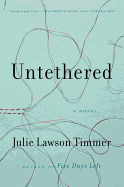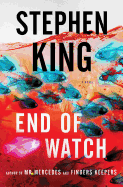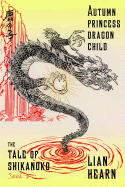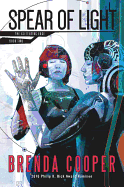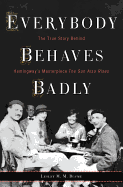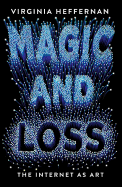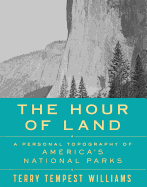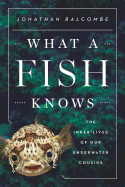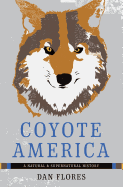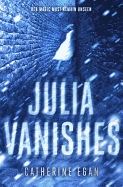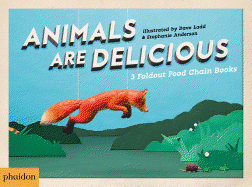 |
| photo: Andrew Walker |
Negin Farsad is a writer, comedian and actor who has devoted much of her work trying to dispel cultural stereotypes. She was named a TED Fellow for her work in social justice comedy and holds an M.A. in African-American studies from Columbia University. Her work in television includes writing or appearing on Comedy Central, MTV, PBS, IFC and Nickelodeon. She is also director/producer of the feature films Nerdcore Rising, starring Weird Al Yankovic, and The Muslims Are Coming!, starring Jon Stewart, David Cross and Lewis Black. How to Make White People Laugh (Grand Central Publishing) is both a memoir of growing up Iranian-American and a funny primer for understanding the misrepresentation of Muslims in society. Blending the nuance of a social science text with the lighthearted candor of a sitcom, it brings serious issues to light.
In How to Make White People Laugh, you write about growing up in one of the few Muslim American families in Palm Springs, Calif. How has this experience shaped your comedic work?
Palm Springs is, in and of itself, a very weird place to grow up. It's a retirement community. My formative years took place among senior citizens. When I went out to play in the front yard, I witnessed neighbors on walkers taking very slow strolls down the street. I saw Cadillacs rolling through the neighborhood at minimum speeds. I did not, however, see any other children. I had to invent so many imaginary worlds to make things interesting for myself. Then, when I went to school, I was one of two Iranian-American kids in my class, and we weren't exactly peeps. I didn't have a "gang" or a "clique" or a "posse"--I had to create those groups from scratch because there was no natural fit for me. That led me to some interesting "goth" and "gypsy" phases on the fashion front, but it also pushed me face-forward into the drama department in high school. Everyone who looked weird and didn't have a solid peer group just ended up in drama. There, I was allowed to be a weird little ethnic girl with a stupid fashion sense. Once you're in that comfort zone, all you want to do is stay there.
You talk about how you used to "feel black." What caused you eventually to embrace your identity as a Muslim American? Why did it take until after grad school to make this shift?
I can't say what exactly changed because it wasn't as if 9/11 happened and then I immediately embraced my Iranian-American Muslim identity. It was a slow burn--little things started happening more and more. I remember trying to catch a cab [in New York] and a woman told me to be careful because "all the cabbies are Muslim." I said, "Hey lady, I'm Muslim." And then I got in a cab with a, sure enough, Muslim driver. It is New York, after all and the Muzzies have the taxi industry on lockdown.
While I was in grad school, little things like that kept happening and needling at me, like a mosquito bite that starts out on the lighter side of itchy and then moves to full-scale-insane-itchy. I also remember after doing comedy for a couple of years in New York, I had this strange realization that I might be the only Iranian-American Muslim comedian in NYC--maybe even the northeastern seaboard! And then I just kept looking for voices like mine on TV or in films or anywhere and we were so very few. I had this feeling that I needed to step it up. I needed to fully come out of the closet as an ethnic lady. I wasn't trying to hide it exactly, but I wasn't overt with it either. Being quiet wasn't going to help the burgeoning Islamaphobia. At some point, you say to yourself, "My silence is a little bit like tacit approval, huh?"
Given the Islamaphobia in much of the U.S., what are some things individuals can do to help society adopt a more nuanced and respectful view of Muslims?
If you find yourself enjoying yet another TV show--and yes, even the ones on "prestige cable"--where the bad guys are Muslim, you've got to ask yourself, why am I supporting this show? Demand better of your broadcasters. These narratives seep into our psyche and the average person begins to believe them. I know it's hard, because who doesn't want to watch Homeland? But those storylines can be reckless. Support work from minorities who are trying desperately to break into the mainstream.
But beyond the media, I like to think that the solution largely involves meeting people--meet someone from across the tracks, across town, across the ethnic divide. The more people you meet, the greater your chances of A) making friends B) getting laid and C) debunking any kind of misconceptions you have about "other" people. It's hard to hate people you know. So know more people. In the United States, this is tough, we're all so strewn about--our cities have sprawl and its not like you're going to naturally run into people. We have to be more intentional about it.
 What's one example of a comment or question you hear a lot that people might not realize is offensive?
What's one example of a comment or question you hear a lot that people might not realize is offensive?
I'm not offended by much, actually. A lot of people have asked me, "Why don't Muslims denounce terrorism?" and that used to offend me. But now I realize that the question is mostly a product of how Muslims are presented in the media. People think Muslims don't denounce terrorism because the media doesn't like to show a bunch of reasonable people denouncing violence--that doesn't seem quite "newsworthy" especially when Taylor Swift could have a new video out or Kylie Kardashian may have posted a selfie with her hair in cornrows. So, instead of taking offense, I simply let them know that we do denounce terrorism. I've found that, at the end of the day, most people are not trying to offend me. They just don't have much exposure to people like me.
Is there any particular type of reader who you'd be especially excited to have read this book?
I like to say that this book is a perfect gift for your racist uncle. Everyone has one. He's your uncle so you might be able to see some of his good qualities--but you also cringe when he starts busting out the racial jokes. I think that bigoted uncle isn't actually bigoted. I think he just hasn't been given access to another way of thinking. And maybe a comedic book about identity is an easy access point for a guy like that. By the way, is your uncle Donald Trump? Please buy this book for him.
What were most formative texts you read while completing your M.A. in African-American studies at Columbia? If you had to make one text required reading for the general public, which would it be?
That's a tough question. There were so many texts that felt life-changing at that time. Although it wasn't the first time I read it, I'd say The Autobiography of Malcolm X was one. It chronicles the many stages of self-awareness that ring so true for minorities in America. I remember reading bell hooks's All About Love and feeling that her definition of romantic love is fundamental to our wider social and civic bonds. I think Manning Marable's How Capitalism Underdeveloped Black America is one of those hardcore academic books that's definitely not a leisure read but a brilliant analysis of the role of African-Americans in our country's economic development. Come to think of it, I never read anything funny in grad school--I guess most people don't--but so much of what we read felt essential.
Even after a traumatizing experience with theater in high school, you persevered with comedy. How is live performance therapeutic or cathartic despite the risk of negative feedback?
The fear of public speaking is very common--it's still the number one fear of most Americans. The audience may heckle you, they might berate you, they might tell you how fat and ugly you are, or how stupid you sound, or that you should just die! Audiences can be BRUTAL. So I, too, share that fear. But it doesn't stop me from performing because the flip side of the fear is something very exhilarating: laughter. Audience laughter is otherworldly. It feels so totally wondrous that a comedian is willing to risk the possibility of being shamed off the stage for the chance of feeling that slice of wonder.
What advice do you have for those aspiring to professional comedy (either live or written)?
In the beginning, you will suck more than you get laughs. But comedy is a muscle. You have to keep working at it so it can turn into really hot six-pack abs. I've seen people start out bombing and end up with legitimate comedy careers. Oh, and it takes forever, the process will totally age you, and you'll question all of your life choices. So you might end up a shell of your former self. But you'll be a comedian. A half-shelled comedian. (Humph, I'm not sure if that was "advice" or a "warning.")
Tell us about your upcoming film, 3rd Street Blackout.
3rd Street Blackout is in select theaters now, but it will hit the digital platforms July 5, and there's nothing better to experience after the euphoria of our nation's birthday celebration than a romantic comedy! Well, Independence Day and rom-coms aren't strictly related, but you might be hungover and only capable of sitting on your couch and watching movies. This one is extra fun. It's set in the blackout after Hurricane Sandy in New York. Half of Manhattan was plunged into darkness for five days and strangely, it made everyone more delightful. The film features some romantic shenanigans with the very dreamy Ed Weeks--who most people know from The Mindy Project--and it has some absolutely hilarious turns by Janeane Garofalo, John Hodgman and Rachel Feinstein. And like most romantic comedies, it stars an Iranian-American Muslim female! (That's me.)
The movie generally follows that rule I mentioned above about meeting people. The blackout forced neighbors to meet neighbors. It made communities come together and help each other. In the modern digital context, blackouts are more inconvenient than ever, but they also remind us of an analogue world of social engagement that we've all but forgotten.
What's next?
I will be launching a political comedy podcast with the Earwolf network on July 8 called Fake the Nation. It's basically comedians talking about the news and giving the American political system a weekly crotch punch. I'm also developing a show with a studio, so you might hear more about that, too. I've got another movie in me and another book--but I also want to take more naps and take up knitting. It's very glamorous up in the Farsad world. --Annie Atherton
Negin Farsad: Fighting Stereotypes One Joke at a Time
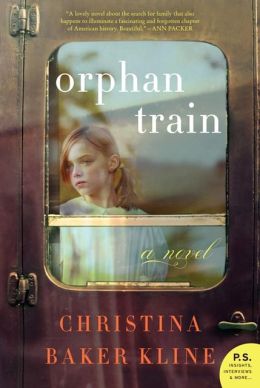
 Isabelle Allende examines the past and present, youth and old age, in The Japanese Lover (paperback $16, Atria, July), a novel about destiny, sacrifice and redemption. The story is set in a senior home, but the details are anchored in 1939, when an eight-year-old Polish girl flees the Nazis and goes to live with her aunt and uncle in San Francisco. There, the girl makes friends--and eventually falls in love--with a Japanese boy interned in the United States following Pearl Harbor.
Isabelle Allende examines the past and present, youth and old age, in The Japanese Lover (paperback $16, Atria, July), a novel about destiny, sacrifice and redemption. The story is set in a senior home, but the details are anchored in 1939, when an eight-year-old Polish girl flees the Nazis and goes to live with her aunt and uncle in San Francisco. There, the girl makes friends--and eventually falls in love--with a Japanese boy interned in the United States following Pearl Harbor.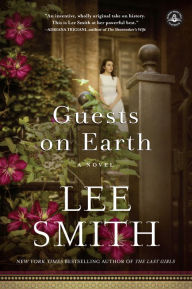 Lee Smith sets Guests on Earth (paperback, $14.95, Algonquin) in 1936 in Highland Hospital, a noted psychiatric facility in Asheville, N.C. Smith examines ideas of sanity versus insanity, art and madness via her orphaned, 13-year-old protagonist, Evalina Toussaint. Evalina is institutionalized and falls under the spell of flamboyant Zelda Fitzgerald (wife of author F. Scott Fitzgerald) who was an actual patient in the hospital before a tragic, suspicious fire killed her and several other women.
Lee Smith sets Guests on Earth (paperback, $14.95, Algonquin) in 1936 in Highland Hospital, a noted psychiatric facility in Asheville, N.C. Smith examines ideas of sanity versus insanity, art and madness via her orphaned, 13-year-old protagonist, Evalina Toussaint. Evalina is institutionalized and falls under the spell of flamboyant Zelda Fitzgerald (wife of author F. Scott Fitzgerald) who was an actual patient in the hospital before a tragic, suspicious fire killed her and several other women.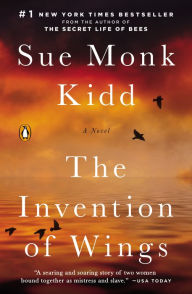 The Civil War and the horrors of slavery infuse The Invention of Wings (paperback, $17, Penguin) by Sue Monk Kidd, a tale inspired by the life of 19th-century abolitionist and suffragist Sarah Grimké. Kidd tackles issues of race, gender, activism, religion and feminism via the creation of two richly drawn characters: the strong-willed daughter of a wealthy South Carolina plantation owner and her personal slave whom she seeks to liberate. --Kathleen Gerard, blogger at Reading Between the Lines
The Civil War and the horrors of slavery infuse The Invention of Wings (paperback, $17, Penguin) by Sue Monk Kidd, a tale inspired by the life of 19th-century abolitionist and suffragist Sarah Grimké. Kidd tackles issues of race, gender, activism, religion and feminism via the creation of two richly drawn characters: the strong-willed daughter of a wealthy South Carolina plantation owner and her personal slave whom she seeks to liberate. --Kathleen Gerard, blogger at Reading Between the Lines



 What's one example of a comment or question you hear a lot that people might not realize is offensive?
What's one example of a comment or question you hear a lot that people might not realize is offensive?
